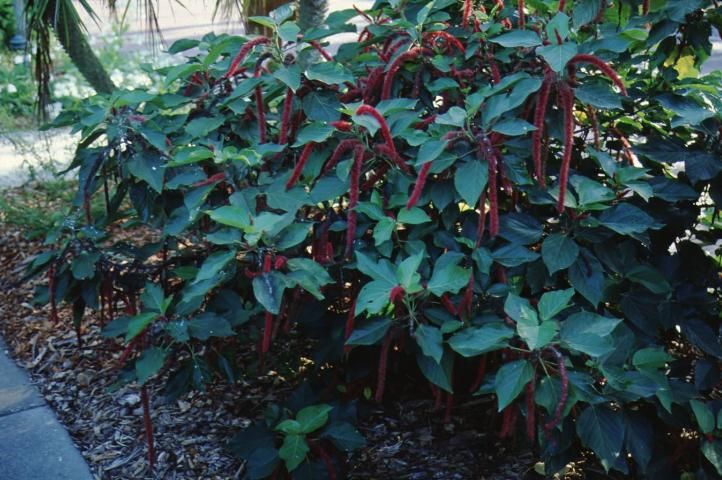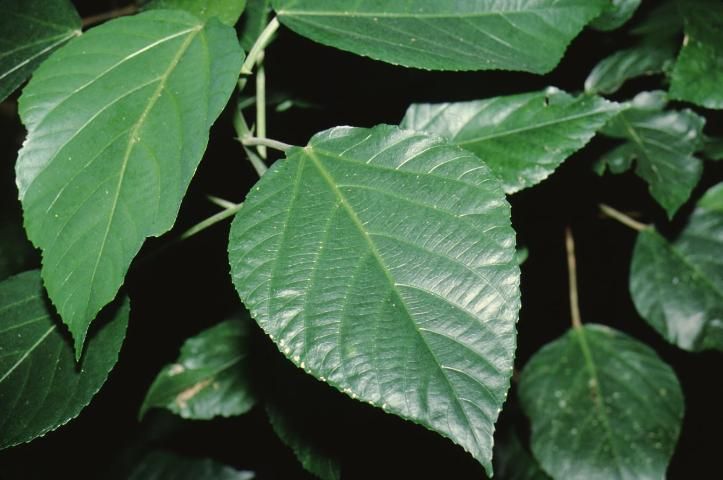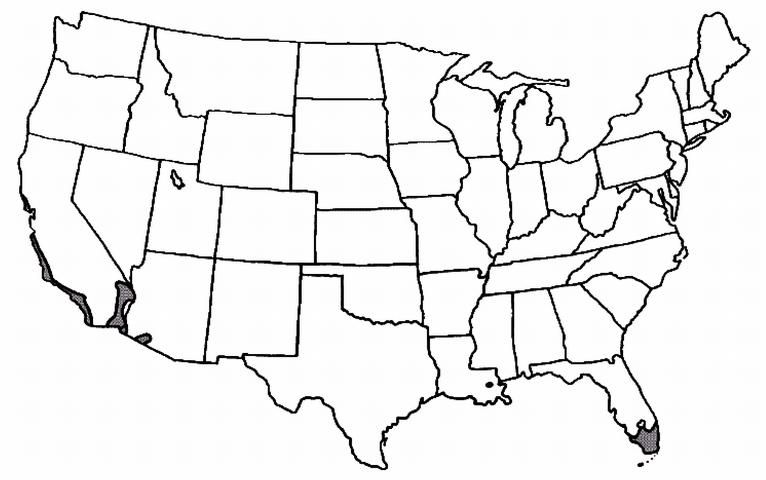Acalypha hispida: Chenille Plant
Introduction
The chenille plant is a vigorous, upright, coarse-textured shrub that usually attains a height of 5 to 6 feet. Older specimens can grow taller with some support. The stems are heavily foliated with 6- to 8-inch-long, ovate, medium-green leaves. The flowers of chenille plant are attractive and droop in cattail-like, pendent clusters up to 18 inches in length. Flowers are showy, red, and borne by female plants during warm months of the year.



Credit: Edward F. Gilman, UF/IFAS
General Information
Scientific name: Acalypha hispida
Pronunciation: ack-uh-LIFE-uh HISS-pid-uh
Common name(s): chenille plant
Family: Euphorbiaceae
Plant type: shrub
USDA hardiness zones: 10 through 11 (Fig. 4)
Planting month for zone 10 and 11: year round
Origin: not native to North America
Invasive potential: not known to be invasive
Uses: hedge; specimen; foundation; border; mass planting; accent
Availability: somewhat available, may have to go out of the region to find the plant

Description
Height: 4 to 6 feet
Spread: 6 to 8 feet
Plant habit: upright
Plant density: moderate
Growth rate: fast
Texture: coarse
Foliage
Leaf arrangement: alternate
Leaf type: simple
Leaf margin: serrate
Leaf shape: ovate
Leaf venation: pinnate; arcuate
Leaf type and persistence: evergreen
Leaf blade length: 4 to 8 inches
Leaf color: green
Fall color: no fall color change
Fall characteristic: not showy
Flower
Flower color: white
Flower characteristic: year-round flowering
Fruit
Fruit shape: no fruit
Fruit length: no fruit
Fruit cover: no fruit
Fruit color: no fruit
Fruit characteristic: no fruit
Trunk and Branches
Trunk/bark/branches: typically multi-trunked or clumping stems; not particularly showy
Current year stem/twig color: green
Current year stem/twig thickness: medium
Culture
Light requirement: plant grows in full sun
Soil tolerances: acidic; slightly alkaline; sand; loam; clay
Drought tolerance: moderate
Soil salt tolerance: poor
Plant spacing: 36 to 60 inches
Other
Roots: usually not a problem
Winter interest: plant has winter interest due to unusual form, nice, persistent fruits, showy winter trunk, or winter flowers
Outstanding plant: plant has outstanding ornamental features and could be planted more
Pest resistance: long-term health usually not affected by pests
Use and Management
The chenille plant is a beautiful flowering shrub that is commonly used as an accent, hedge, specimen, or container plant. Its long period of bloom makes it a showy centerpiece for any tropical or subtropical garden. It is well suited for planting in a container to be set on a deck or patio.
This plant performs well in many types of well-drained landscape soils. It grows and flowers best in full sun, with little care other than irrigation needed to maintain the plant once it is established. After the plant finishes flowering, pruning may be needed to keep it a desired size.
Propagation is by cuttings.
Design Considerations
The long red flowers of the chenille plant are a striking feature that can be used to bring color to a shrub border. Red shows best in full sun when paired with other shrubs with white and pink flowers to make the red look more intense. Shrubs with dark green glossy leaves would also contrast well with the leaves of the chenille plant. Foreground plants could include purple and white flowers and fine or medium textures such as narrow strap blades in a clumping form or tall spiky forms with narrow leaves.
Pests and Diseases
There are no diseases of major concern associated with chenille plants. Scales, mites and aphids may be troublesome pests in some landscapes, especially when the plants are grown in partial shade.


